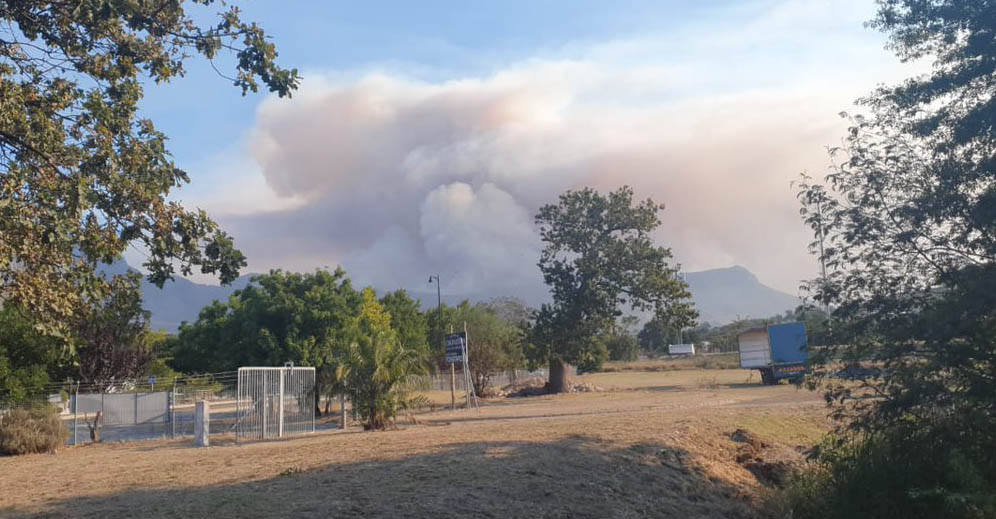Updated at 5:01 p.m. ET (United States) Feb. 27, 2021

Over the last week the fire in the Western Cape of South Africa has grown to about 13,600 hectares (33,606 acres) as it now spreads into steep terrain that is difficult for firefighters to work in safely.
The fire is just southeast of Stellenbosch, 3.5 km southwest of Franschhoek, and 20 to 24 km east of Cape Town.
There is no additional information about the two firefighters that were injured except that their injuries were described as serious and at last report they are still in the hospital.

From The South African:
[Fire officials] warned that soaring temperatures reaching into the high 30s, accompanied by strong winds expected [Sunday] afternoon, mean that firefighters have their work cut out for them today.
Cape Winelands District Municipality’s Fire Services spokesperson Jo Ann Otto said on Saturday evening that the fire in the valley below Jongkershoek is proving challenging to combat.
“The teams reported repeated flare-ups that were difficult to bring under control due to the hot weather. The firefighters, ground crews, and vehicles will focus their attention on managing this fire during the relative cool of the night. Active firefighting activities and management of flare-ups a will continue throughout the night,” she said.

Originally published at 4:55 p.m. ET (United States) Feb. 27, 2021

Two firefighters that were injured while working on a wildfire in South Africa have been transported to a hospital.
Over the last five days the fire has burned more than 8,000 hectares (19,000 acres) in the Jonkershoek Valley, 10km southeast of Stellenbosch.

“Further planning today includes the deployment of aerial resources to water bomb the higher peaks and hot spots,” said Jo-Anne Otto from the Cape Winelands District Municipality on February 27. “The dense smoke and high winds make flying very dangerous, which means that water bombing can only be implemented when there is good visibility and little wind.”
Stellenbosch Mayor Gesie van Deventer said,’’ Aerial support is deployed when visibility and winds allow for this.”
Four helicopters and two single engine air tankers have been dropping water or retardant when conditions permit.


Thanks and a tip of the hat go out to Don.

